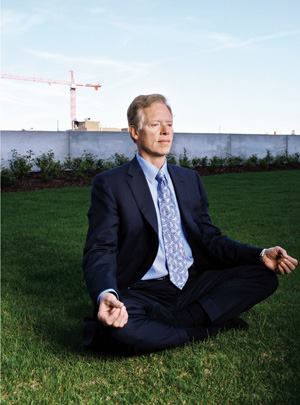Fifield Cos. wasn’t afraid to jump in, unlike other developers who shied away from the complex site, which has multiple train and bus lines running nearby. (For more information on the complexities of K Station, see “A Train Runs Through It,” right). “We tackle projects that others may not be willing to tackle,” says Rick Cavenaugh, who joined the firm in 2003 as president and COO to help run the company’s apartment division. “Our national experience gives us a perspective that offers different ways of solving problems.
“For the most part, our competitors are regional players. There are very few national players other than the REITs,” adds Cavenaugh, who was previously president of two major apartment development firms.
The company’s watchful eye has led to other smart investments across the country, where it has taken leaps of faith to introduce a new product type or bring its signature product to these untapped territories. The firm enjoys a strong financial network with some of the country’s top banks and institutions, so finding financing is not a problem. “Our financial relationships with our partners is something that allows us to chase opportunities with the knowledge that our projects will be able to be structured in a way that we can get the deal done,” says Tim Connelly, a senior vice president at Fifield.
Next month marks the highly anticipated debut of Allure Las Vegas, a sleek, 41-story luxury condo tower located on Sahara Avenue, just west of The Strip. Allure is the first high-rise to be built north of the Sahara—a bold move that cast many inquisitive eyes toward Fifield Cos. “We came in and everybody said, ‘You are going north of the Sahara?’” Fifield recalls. “We said that if we build something big enough and nice enough with good amenities and a presence, people will come.”
And he was right. The 428-unit community, which is a five-minute drive from the strip, is 93 percent sold as of July 15. Its biggest competitor, Sky Las Vegas, is still around 80 percent, according to Fifield. “The project has done very well and sales are strong,” says Herbert Kolben, senior vice president and chief real estate investment officer at the Washington, D.C.-based Union Labor Life Insurance Co., which has financed about 10 projects for Fifield, including Allure Las Vegas. Other developers are now following Fifield’s lead, as a handful of smaller-scale projects have joined the landscape.
Fifield never doubted the strength of Vegas’ residential market, despite numerous high-profile condo projects that never got off the ground. In fact, he plans to build additional product to capitalize on the city’s strong fundamentals: a small inventory of new development coupled with 96.6 percent employment and close to 100,000 people moving to the city annually. “We have been looking at more sites there because Las Vegas long-term is probably the highest growth market in the United States,” Cavenaugh says.
Just to the west, in the Golden State, the firm’s market insight also is paying off. The Californian on Wilshire, an ultra-luxury high-rise in L.A. that opened last year, features the largest unit sizes in the area. Condos range from 2,600 square feet to as high as 6,700 square feet. (A handful of buyers did purchase and combine two units.)
“We took a leap of faith when we analyzed the buildings there and picked up just the hint of the trend of people wanting to buy larger units,” Fifield says. The company went with its gut instinct and, though the building was zoned for 110 units, opted to build 74 larger-sized units that met market demand. The tactic worked, and the building sold out in less than 90 days. For its next L.A. project, the 35-unit 1200 Club View, the firm went a step further designing condos more than 8,000 square feet in size.
Fifield Cos.’ decisions, however, don’t always pan out as expected. Back in the ’90s, the firm jumped into the conversion business and transformed warehouses in the West Loop into condo properties. Fifield quickly discovered that, unlike new construction, conversions are riddled with unknown costs and hidden construction challenges. The firm had almost completed one of its loft buildings when an inspector announced that all stairways had to be replaced because they were 3 inches short of the code-required width. Fifield didn’t easily forget the $1 million hiccup and now sticks to new construction.
